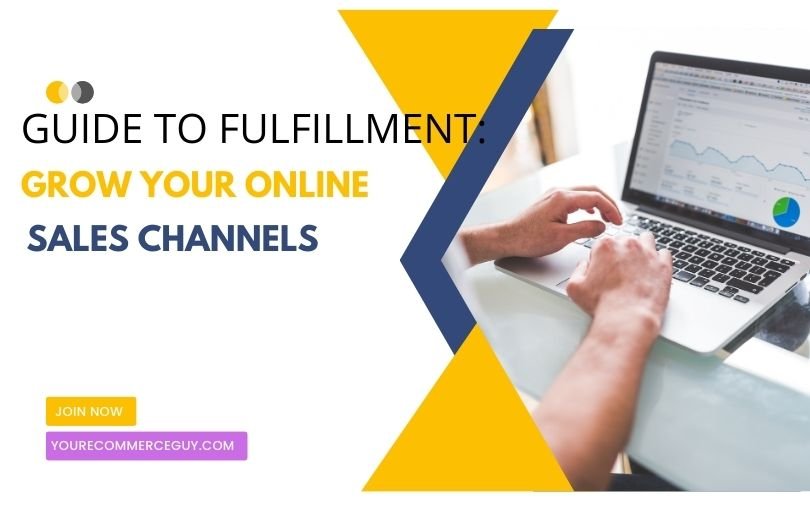

Introduction:
In the fast-paced world of e-commerce, finding the most efficient and cost-effective way to fulfill customer orders is crucial for the success of your business. Amazon, being a giant in the online retail space, offers various fulfillment options to cater to different needs. Understanding the pros and cons of each fulfillment type can help you make an informed decision that aligns with your business goals. In this blog, we will explore the different Amazon fulfillment types and help you determine which one is right for you.
1.Fulfillment by Amazon (FBA):
Fulfillment by Amazon (FBA) is a popular choice for many sellers, especially those looking for a hands-off approach to order fulfillment. With FBA, you send your products to Amazon’s fulfillment centers, and the company takes care of storage, packing, and shipping when an order is placed. This allows you to focus on other aspects of your business, such as marketing and product development.
Pros of FBA:
- Prime eligibility: FBA products are often eligible for Amazon Prime, attracting more customers.
- Customer service: Amazon handles customer inquiries and returns on your behalf.
- Shipping speed: FBA orders benefit from Amazon’s fast and reliable shipping network.
Cons of FBA:
- Fees: FBA involves storage and fulfillment fees, which can impact your profit margins.
- Limited control: You have less control over the packing and shipping process.
2.Fulfillment by Merchant (FBM):
Fulfillment by Merchant (FBM) is an option for those who prefer to handle their own order fulfillment. With FBM, you store, pack, and ship products directly from your own facility or a third-party warehouse.
Pros of FBM:
- Cost control: You have more control over fulfillment costs.
- Flexibility: You can implement your own packaging and shipping processes.
Cons of FBM:
- Time-consuming: FBM requires more hands-on involvement in the fulfillment process.
- Prime limitations: FBM might not be eligible for Amazon Prime, potentially affecting customer preferences.
3.Seller Fulfilled Prime (SFP):
For businesses looking to maintain control over the fulfillment process while still offering Prime benefits, Seller Fulfilled Prime (SFP) is an option. With SFP, you can fulfill orders from your own warehouse but still qualify for Prime shipping.
Pros of SFP:
- Control: You maintain control over your fulfillment process.
- Prime benefits: Your products can still be eligible for Amazon Prime.
Cons of SFP:
- Stringent requirements: Amazon has specific requirements for shipping speed and order defect rates.
- Initial setup: Meeting SFP requirements may involve initial setup costs.
Get a free consultant to find out which type of fulfillment is perfect for your business
Here are some frequently asked questions (FAQs)
1. What is Amazon Fulfillment?
Q: What does “Amazon Fulfillment” mean?
A: Amazon Fulfillment refers to the services provided by Amazon to store, pack, and ship products to customers on behalf of sellers. It includes different fulfillment options such as Fulfillment by Amazon (FBA), Fulfillment by Merchant (FBM), and Seller Fulfilled Prime (SFP).
2. What is the difference between FBA and FBM?
Q: Can you explain the difference between Fulfillment by Amazon (FBA) and Fulfillment by Merchant (FBM)?
A: FBA involves sending products to Amazon, which handles storage, packing, and shipping. FBM means sellers handle these aspects themselves, either from their own facilities or third-party warehouses.
3. How does FBA pricing work?
Q: What fees are associated with Fulfillment by Amazon (FBA)?
A: FBA fees include storage fees, order fulfillment fees, and other charges. These fees vary based on factors like product size, weight, and storage duration. It’s important to consider these costs when using FBA.
4. Can I use my own packaging with FBA?
Q: Do I have control over packaging if I use Fulfillment by Amazon (FBA)?
A: While Amazon has specific packaging requirements for FBA, you have some control over branding. However, the actual packing process is handled by Amazon.
5. What is Seller Fulfilled Prime (SFP)?
Q: How is Seller Fulfilled Prime (SFP) different from FBA?
A: SFP allows sellers to fulfill orders from their own warehouses but still qualify for Amazon Prime benefits, providing more control over the fulfillment process compared to FBA.
6. Are there specific requirements for Seller Fulfilled Prime?
Q: What are the eligibility requirements for Seller Fulfilled Prime (SFP)?
A: SFP has specific requirements regarding shipping speed, order defect rates, and other metrics. Sellers must meet these criteria to qualify for Seller Fulfilled Prime.
7. Can I switch between fulfillment types on Amazon?
Q: Is it possible to switch from Fulfillment by Amazon (FBA) to Fulfillment by Merchant (FBM) or vice versa?
A: Yes, you can switch between fulfillment types. However, it requires careful planning and may involve adjusting inventory and updating product listings.
8. How do I calculate my total fulfillment costs?
Q: What factors should I consider when calculating my total fulfillment costs with Amazon?
A: Consider FBA or FBM fees, storage fees, shipping costs, and any additional charges associated with your chosen fulfillment method to calculate your total fulfillment costs accurately.
Conclusion:
Choosing the right Amazon fulfillment type depends on your business model, size, and goals. If you prioritize convenience and scalability, FBA might be the right choice. If you prefer more control over the fulfillment process, FBM or SFP could be suitable. Assess your priorities, costs, and logistical capabilities to make an informed decision that aligns with the growth and success of your business in the competitive world of e-commerce.
Error: Contact form not found.
